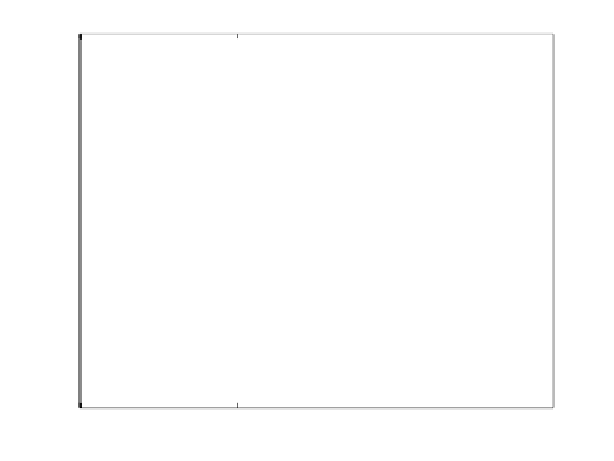Database Reference
In-Depth Information
Comparisions of approximations for
κ
=500, d varying
1200
κ
=500
(1.14)
(1.15)
(1.17)
1000
800
600
400
200
0
0
500
1000
1500
Dimension d
FIGURE 6.2
: Comparison of approximations for varying
d
,
κ
= 500.
We begin by holding
d
fixed at 1000, and allow
κ
to vary from 10 to 5010.
Figure 6.1
shows the values of computed
κ
(estimation of
κ
) using the three
approximations. From this figure one can see that (6.14) overestimates the
true
κ
, while (6.15) underestimates it. However, our approximation (6.17) is
very close to the true
κ
values.
Next we illustrate the quality of approximation when
κ
is held fixed and
d
is
allowed to vary. Figure 6.2 illustrates how the various approximations behave
as the dimensionality
d
is varied from
d
= 4 till
d
= 1454. The concentration
parameter
κ
was set at 500 for this experiment. We see that (6.15) catches up
with the true value of
κ
after approximately
d
2
κ
(because the associated
r
values become small), whereas (6.17) remains accurate throughout.
Since all the approximations depend on
r
(which implicitly depends on
κ
and
d
), it is illustrative to also plot the approximation errors as
r
is allowed
from 0
.
05 to 0
.
95. Let
f
(
d, r
),
g
(
d, r
), and
h
(
d, r
) represent the approxima-
tions to
κ
using (6.14), (6.15), and (6.17), respectively. Figure 6.3 displays
|
≥
for the varying
r
values. Note that the
y
-axis is on a log-scale to appreciate the differences
between the three approximations. We see that up to
r
A
d
(
f
(
d, r
))
−
r
|
,
|
A
d
(
g
(
d, r
))
−
r
|
,and
|
A
d
(
h
(
d, r
))
−
r
|
0
.
18 (dashed line
on the plot), the approximation yielded by (6.15) has lower error. Thereafter,
approximation (6.17) becomes better.
≈





















Search WWH ::

Custom Search